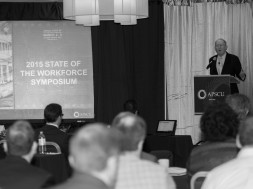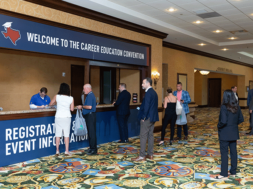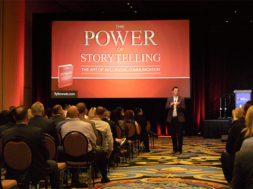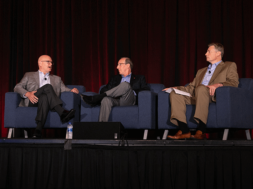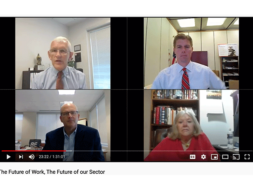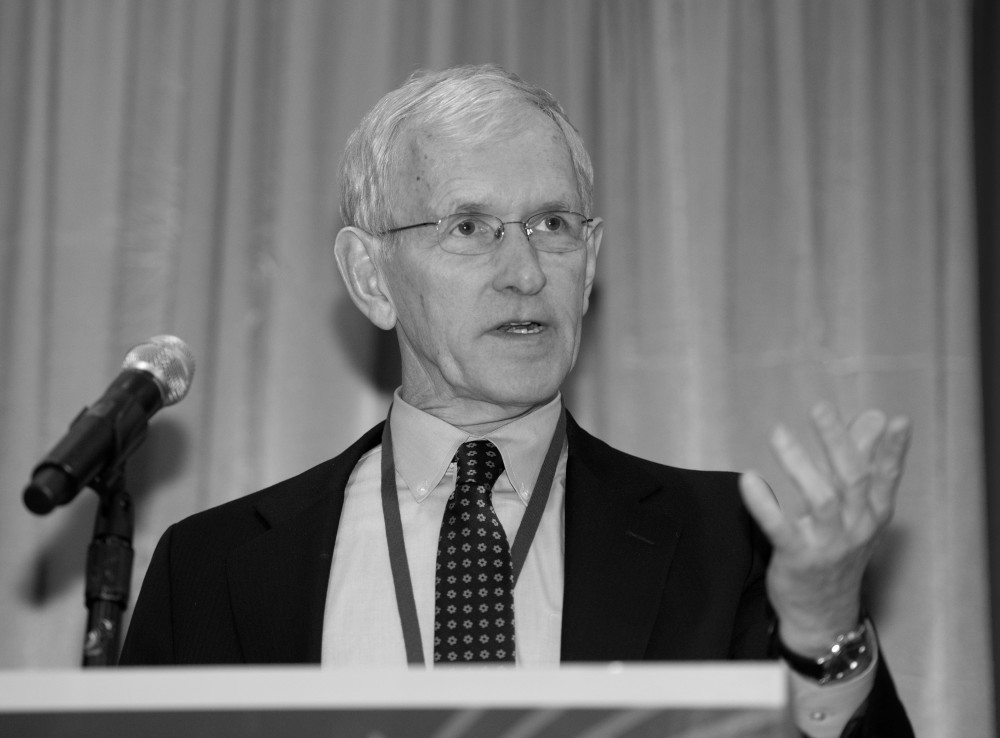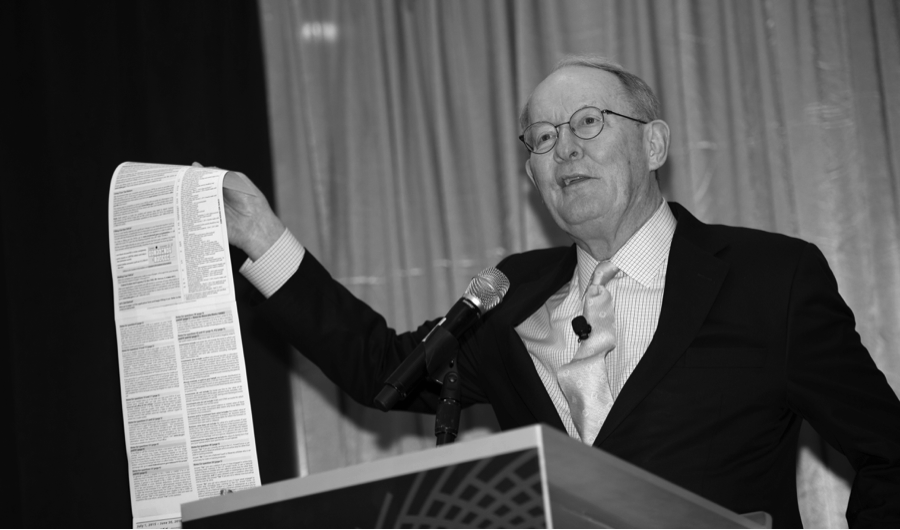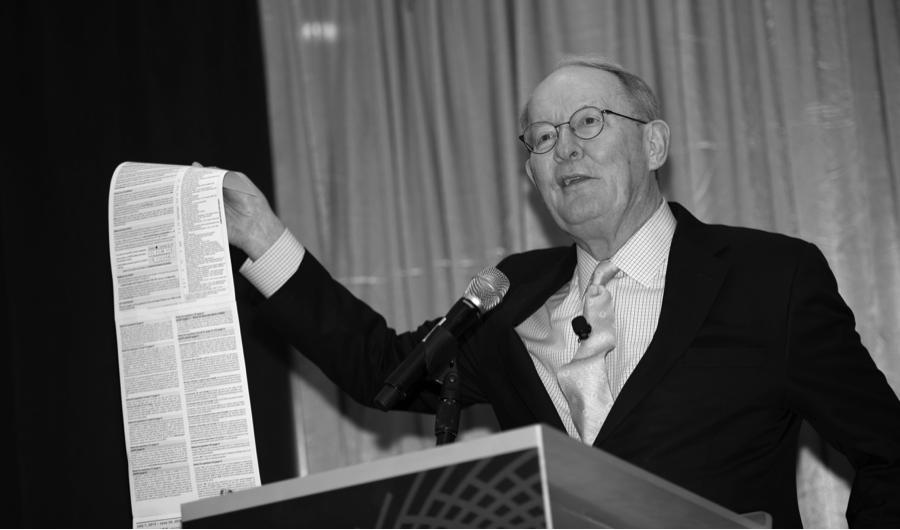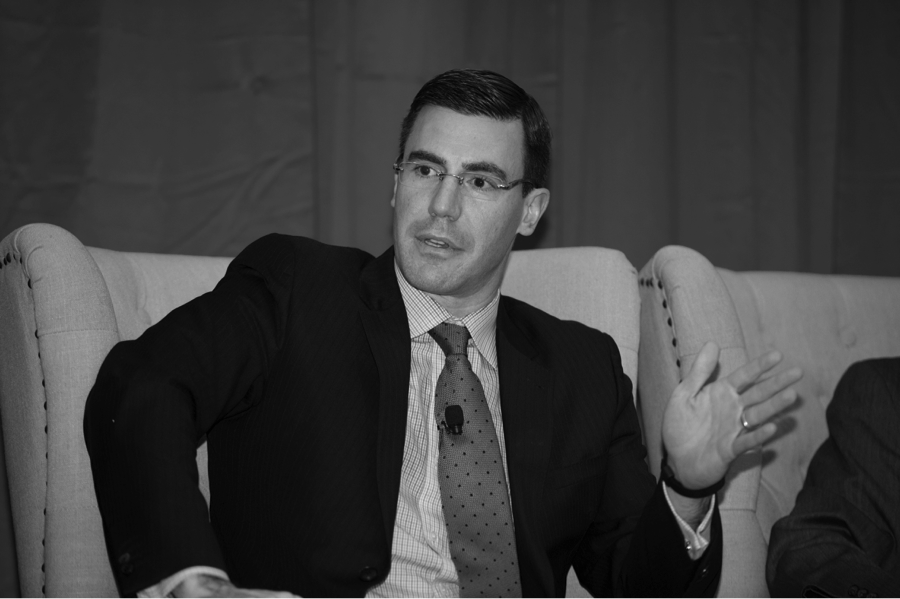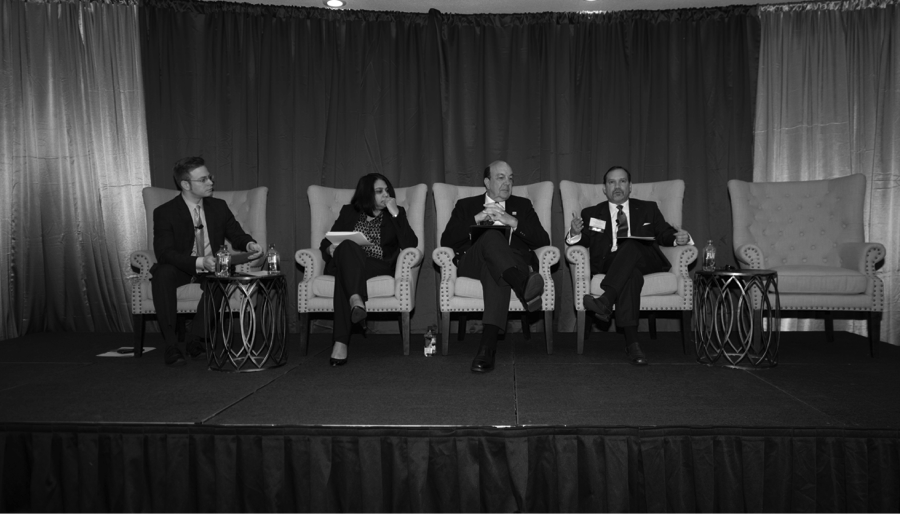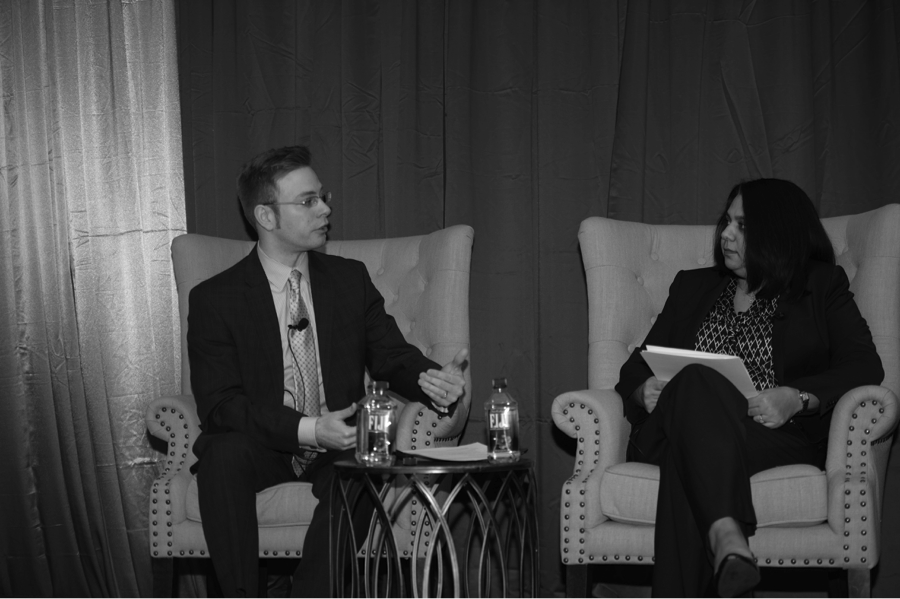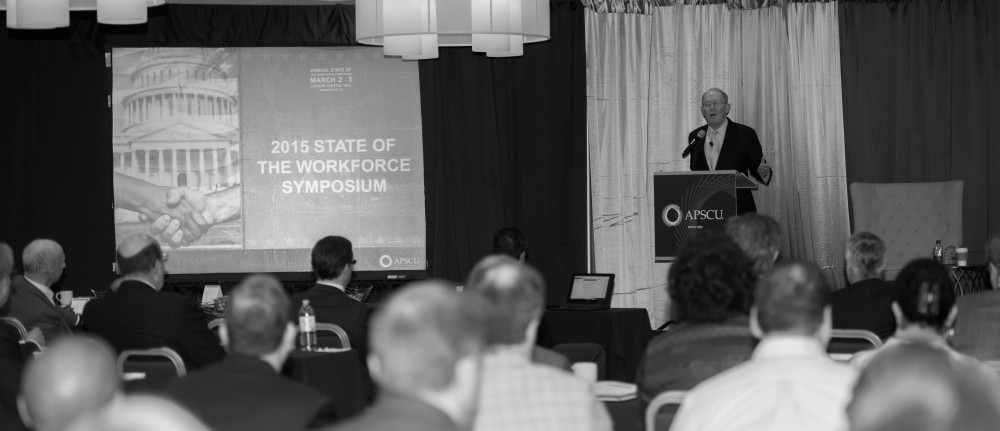
The APSCU State of the Workforce Symposium Emerging Trends in the Workforce and Workplace
Opening Speech by Steve Gunderson, President and CEO, Association of Private Sector Colleges and Universities (APSCU)
5 Big Ideas from the APSCU State of the Workforce Symposium
By the Association of Private Sector Colleges and Universities (APSCU)
For two days, APSCU convened some of the most provocative thought leaders in postsecondary education and workforce. The result was several engaging discussions on how best to close the skills gap, align academic programming with workforce demands, and best serve today’s new traditional student.
Below are five big ideas that came out of the APSCU State of the Workforce Symposium:
- Affordable and accessible postsecondary education is the key to student progress.
Jamie Merisotis, president and CEO of Lumina Foundation, said it best when he explained that “it’s not where they’re learning that’s important, it’s how well they’ve learned it.” The Workforce Symposium speakers often addressed the latest designs in education delivery, but Merisotis made the point that whatever higher education finds to be most effective for their students, it should be affordable and accessible to many.
- Employer-partnerships, employer-partnerships, employer-partnerships.
A common theme throughout the entire event was the urgency for institutions to reach out to the businesses that hire their graduates or even the businesses that are located in your community. Bob Skodinsky, manager of the Haas Technical Education Center, explained that working with institutions is one of his company’s specialties. Skodinsky said that Haas pools together all of their partners to come up with solutions-in-a-box, he said. Ami Bhandari, senior vice president of education and strategy at Lincoln Educational Services, echoed the same thoughts. Bhandari said Lincoln Tech’s most successful programs are the ones that allowed them to be integrated with leaders in the industry or employers. “We are always soliciting feedback from our thousands of employer-partners and looking to generate new ideas,” Bhandari said.
- Many jobs are experiencing a profound degree inflation.
Matt Sigelman, CEO of Burning Glass Technologies, explained that many open positions are undergoing ‘degree inflation.’ The only jobs that are resistant to degree inflation are ones that require a license or certification. Sigelman suggested that institutions should take a look at the hard-to-fill job openings and figure out a way to design programs that support those jobs. An example he used was Information Technology. Sigelman said in 2013, there were over 209,000 job postings for cybersecurity positions. Institutions should find out what middle-skills job positions, like help desk technicians and network support specialists, help to support the top IT jobs, like cybersecurity.
- A common language among students, educators and employers is needed for credentials.
Stephen Crawford, professor and project director at the George Washington Institute of Public Policy, Improving Labor Markets through Voluntary Standards for Describing Credentials, urged workforce and postsecondary education leaders to establish a common language for open badges and credentials. Crawford explained that the only way to increase transparency in higher education is to show comparability across all different dimensions, from open badges to degrees to certificates.
- Designing academic curriculum to align with workplace demands is paramount to opportunity and success.
Jeff Strohl, director of research at the Georgetown University Center on Education and the Workforce, illustrated for attendees that there is a great disconnect between enrollment decisions, the curriculum development, and hiring that can undermine career-focused education. Strohl calls for a widening of transmissions channels that connect labor to education and training. He suggests that human resources data could be the key to strengthening this connection. “It could be helpful in understanding the relationship between a job posting and a successful hire,” Strohl said.
The APSCU State of the Workforce Symposium “Emerging Trends in the Workforce and Workplace”
Opening Speech by Steve Gunderson, President and CEO, Association of Private Sector Colleges and Universities (APSCU)
The 2015 APSCU State of the Workforce Symposium was held on March 2 and 3 in Washington, D.C.
Good afternoon. Welcome!
Goal of the Symposium:
- To bring together the best minds in emerging occupations and emerging occupational skill demands.
- I want this Symposium to be “the place” where our sector, and all of higher education can come together with business and labor economists to both look into the future; and to then understand how we transfer this information into our academic programming.
It will not surprise you that I need to spend some time, at the beginning, expressing our appreciation to all those who have made this Symposium “probably the best set of voices on this topic that I have ever seen assembled in one place at one time!”
You are about to hear from some incredible expert voices! Thank you to our speakers for taking time out of their busy schedules to share their knowledge and passion with all of us.
But if the goal of this event is to transfer this insight into your academics, then the real heroes are those of you who have invested your time to be here; who will take this information and insight back home to your schools. Thank you to each of you for attending!
Over the next two days you will hear from a range of experts. They will be addressing a number of critical topics:
- The constant need for revamping and improving higher education access and delivery.
- How to merge occupation and skill demands with academic programming.
- The future of credentials in a rapidly changing higher education delivery system; and the rapidly changing workplace demands.
- How to combine technology and education to promote both universal student access and universal student success.
- Over the next three days you will spend a lot of time talking about policy, and even about politics – for this is Washington.
But two weeks ago in a speech to some of our school leaders, I said:
“This is much more than a debate about policy; or a debate about politics. This is a morale question about whether this nation will provide an opportunity for education and career skills that leads to real jobs; with real wages; with a real chance for a place in America’s middle class!”
Since I joined APSCU four years ago, you have heard me speak about the critical role that higher education generally, and our sector specifically, plays in addressing the skills gap; the capacity gap; and the opportunity gap.
Our employers need a workforce with current skills. Yet, unless this sector grows, many potential students will have a skills gap denying them potential employment.
When one looks at the projections of 55 million new workers entering the labor force by 2020, we must also recognize that public sector resources simply are not adequate to meet the emerging demand for skills. Unless our sector grows and serves we will also face a capacity gap in the delivery of postsecondary education with career skills.
The result will be two generations of citizens enduring an opportunity gap to build for themselves and their families a brighter future than they have today.
There is a lot of talk – in this town and across America – about rebuilding the Middle Class. But as someone who has spent considerable time researching and writing about how to create a new middle class, let me be clear:
Until we create private sector growth of 4-5% annually; and we empower our fellow citizens with the education and skills to become full partners in this American economic journey, there is no chance of rebuilding the nation’s middle class!
This is not about “Career Colleges.” This is not about “Community Colleges.” This is about a postsecondary education delivery system that is as diverse as the students we seek to serve, all working together – each lifting up our own special missions, to equip America’s emerging workforce for America’s emerging workplace. We are all in this together!
Our sector has a unique role:
- We are the only sector solely focused on postsecondary education with a career focus.
- We are in more locations and more communities than anywhere else.
- We pioneered online education and we will lead the next generation of online and blended learning.
- When new innovations, such as credentials, become a common part of a prospective employee’s resume, it is our sector who will be leading the design, delivery and credit for such knowledge!
Now, before I quit let me return to the beginning of my remarks. I want to extend a special thanks to our sponsors:
- Our Chairman Sponsor USA Funds. Tomorrow our good friend Bill Hansen, president and CEO of USA Funds, will introduce Senator Lamar Alexander.
- Our President Sponsor: Pearson.
- Our name badge sponsor: Ambassador Education
To our member institutions, thank you for your role as citizens of this sector in supporting the work of APSCU; and thank you for taking the time to travel here for this important symposium.
To our partners: employers, our peers in higher education, and key partners like accreditors and state association leaders – thank you for making time to join us in this conversation. We see you as essential partners in this important work, and we seek to be seen by you as an essential partner in your work!
So let me close my remarks as I often conclude my remarks at other times. There is no other place I would rather be today than serving as the president and CEO of this association; helping to lead this important work. But what really makes this work special is all of you. You are embarked upon America’s most noble mission: to help new generations of Americans achieve their version of the American Dream – one student at a time. So, my most sincere thanks for who you are and all that you do!
At a Glance: the APSCU State of the Workforce Symposium
The Symposium convened thought leaders from a range of industries – business, economic, government and higher education – who addressed the skills gap issue and what America needs to grow its economy and rebuild middle class opportunity.
Picture name: Lamar Alexander
Caption: Keynote speaker, Senator Lamar Alexander, Chairman of the Senate HELP Committee, explained why it is important to continuously educate and inform federal, state and local policymakers on ways to better align education and training with labor market demands.
Picture name: Andy Van Kleunen and Peter Janzow
Caption: “Credentialing and the Workforce,” panel (left to right) Moderator: Andy Van Kleunen, CEO, National Skills Coalition and Peter Janzow, Executive Director, Pearson Acclaim.
Picture name: Brandon Busteed
Caption: Brandon Busteed, Executive Director, Gallup Education
Picture name: Bringing It All Together
Caption: “Bringing it All Together,” panel (left to right): Moderator: Jason A. Tyszko, Senior Director, U.S. Chamber of Commerce Foundation Center for Education and Workforce, Ami Bhandari, Senior Vice President of Education & Strategy, Lincoln Educational Services, Bob Skodzinsky, Manager, Americas – Haas Technical Education Center (HTEC) Program, and Danny Vargas, Chair, Virginia Board of Workforce Development, President and Founder, VARCom Solutions, Herndon, VA.
Picture name: Jason A. Tyszko and Ami Bhandari
Caption: Jason A. Tyszko, Senior Director, U.S. Chamber of Commerce Foundation Center for Education and Workforce and Ami Bhandari, Senior Vice President of Education & Strategy, Lincoln Educational Services
Attendee Perspective
